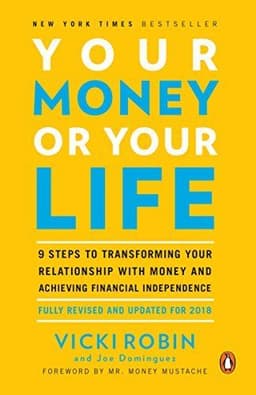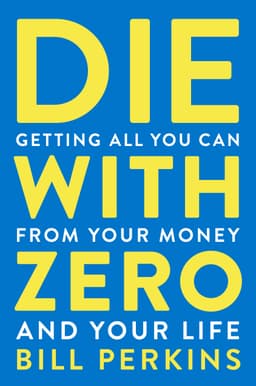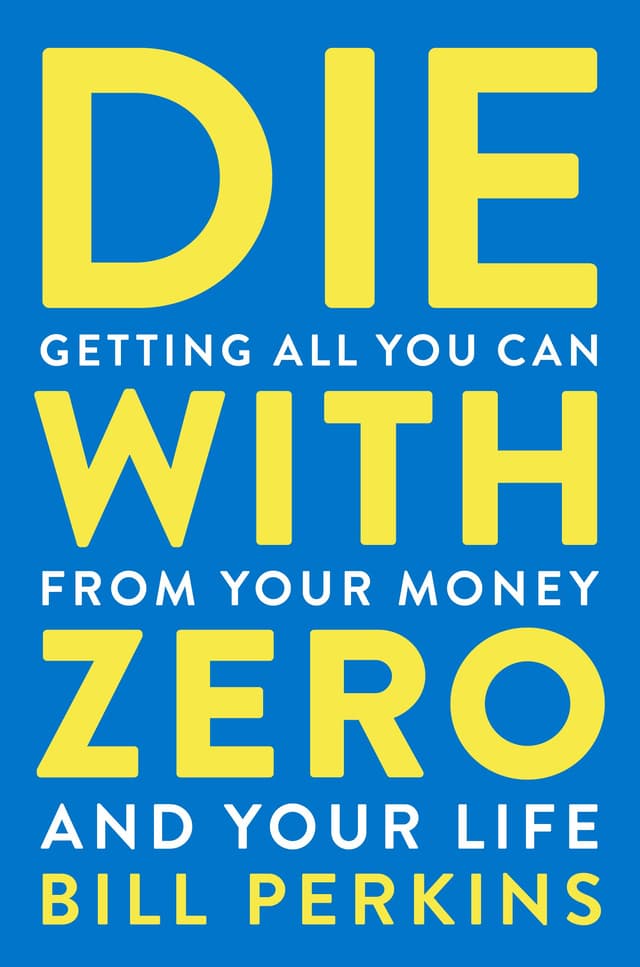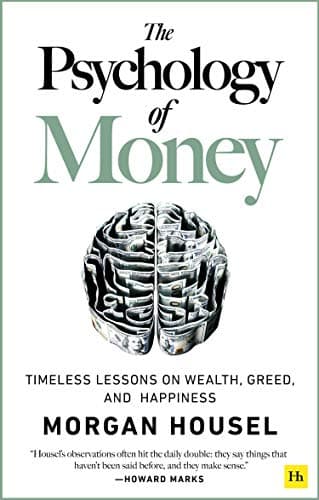
Your Money or Your Life Book Summary
Transforming Your Relationships With Money and Achieving Financial Independence
Book by Joe Dominguez, Vicki Robin
Summary
Your Money or Your Life is a transformative guide that empowers readers to redefine their relationship with money, align their spending with their values, and achieve financial independence through a nine-step program that focuses on conscious living and fulfillment rather than endless consumption.
Sign in to rate
Average Rating: 3.2
Financial Transformation Requires Integrating All Aspects of Life
The purpose of this book is to transform your relationship with money by integrating your spending and saving with your values and purpose in life. It provides a 9-step program to help you shift from being a slave to money to being the master of it, able to think for yourself and achieve financial independence in a meaningful way. The program is about healing the split between your money and your life, so that life becomes one integrated whole.
Section: 1, Chapter: 1
Money is Something You Trade Your Life Energy For
“Money is something you trade your life energy for. You sell your time for money. It doesn’t matter that Ned over there sells his time for a hundred dollars and you sell yours for twenty dollars an hour. Ned’s money is irrelevant to you. The only real asset you have is your time. The hours of your life.”
Section: 1, Chapter: 1
Making a Dying Versus Making a Living
For many people, work has become "making a dying" rather than "making a living." Signs you might be making a dying:
- Spending most waking hours at a job that drains your energy
- Trying to relieve job stress in unhealthy ways during off-hours
- Caught in a "work-spend" cycle to maintain a lifestyle you think your job/status requires
- Defining yourself by your job title and salary rather than who you are
When work consumes so much of your precious life energy but provides little joy or meaning in return, that's making a dying, not a living.
Section: 1, Chapter: 1
Fulfillment Curve Shows Optimal Amount of Stuff for Happiness
The Fulfillment Curve is a graph showing the relationship between the experience of fulfillment and the amount of money spent. It reveals there is an optimal amount of stuff - "enough" - that maximizes fulfillment. Less than enough feels like deprivation. But more than enough leads to clutter and a drop in fulfillment.
The peak of the curve, where fulfillment is highest, is the sweet spot of "enough." Knowing what "enough" is for you frees you from excess and burden. But consumer culture pushes "more is better," so we often miss the "enough" point, going straight from "not enough" to "too much."
Section: 1, Chapter: 1
Never Having Enough
“If you live for having it all, what you have is never enough.”
Section: 1, Chapter: 1
"Gazingus Pins" are Clutter Temptations that Don't Bring Fulfillment
"Gazingus pins" are any items you feel compelled to buy whenever you see them, even though you likely have a drawer full of them already. They're clutter in the making - that brief shopping high masking a lack of true fulfillment.
Start noticing your own gazingus pins. Catch yourself in a store reaching zombie-like for something you don't need. Connect the dots between accumulating more of these and declining happiness. Then visualize that junk drawer exploding! This heightened awareness of the letdown of gazingus pins compared to the real joys of life helps release their grip.
Section: 1, Chapter: 1
Money Equals Something We Trade Life Energy For
The authors present a new definition of money to transform our relationship with it: Money is something we choose to trade our life energy for. Our life energy is all the hours of precious, limited time we have on Earth. So whenever we work for money, we are trading hours of our life.
This definition puts the focus on what money really costs us - our very life force. It prompts the question: Is this expense worth the hours of my finite life required to pay for it? With this awareness, we can start making more conscious choices aligned with our true values.
Section: 1, Chapter: 2
Calculating Your Real Hourly Wage Reveals Job's True Costs
To determine what you're really trading your life energy for, calculate your real hourly wage:
- Add up all job-related expenses like commuting, work clothing, decompression activities, etc.
- Add these costs to your official work hours to get your real work hours.
- Subtract taxes and job costs from your salary to get your real earnings.
- Divide real earnings by real hours to get your real hourly wage.
The result is often shockingly lower than your official salary. Knowing this allows you to see clearly whether a job is worth it or if it's time for a change.
Section: 1, Chapter: 2
Budgets Don't Work, Tracking Does
Budgets, like diets, tend to fail because they try to force your behavior into preset categories based on how things "should" be. They focus on external rules rather than helping you change your internal relationship with money.
What does work is awareness gained through tracking - writing down every cent that comes into or goes out of your life. This is not deprivation but conscious spending. You get an accurate picture of your habits and can spot patterns to change - not overnight, but gradually and permanently as awareness grows. You put quality of life ahead of quantity of dollars.
Section: 1, Chapter: 3
How to Do a Monthly Tabulation and Convert Dollars to Life Energy
At the end of each month, follow these steps to heighten awareness of how your earning and spending align with your life:
- Create categories for all expenses, being as specific as needed to spot patterns. Include subcategories as useful (e.g. under Clothing: Work Clothes, Leisure, Gazingus Pins).
- Enter all income and expenses in appropriate categories.
- Total each category.
- For each total, divide by your real hourly wage to get hours of life energy spent.
- Notice which categories are worth the life energy and which aren't.
Translate dollars into life energy repeatedly to make that your new metric for financial choices. Let the awareness itself change you over time.
Section: 1, Chapter: 3
Creating Categories Reveals Your Spending Alignment With Values
Rosemary created her own unique spending categories and subcategories to reflect her lifestyle and values:
- She had two beauty-related categories, showing this was a high priority for her
- "Wellness" categories like Health Products revealed her proactive approach to well-being
- "Donations" showed giving was important enough to track separately
- A "Personal Growth" category reflected her commitment to development
For Rosemary, the very process of defining these categories heightened her awareness of what she valued most.
Section: 1, Chapter: 3
How Much is Enough? The Nature of Fulfillment
For each of your monthly spending categories, ask yourself monthly:
- Did I receive fulfillment, satisfaction and value in proportion to life energy spent?
- Is this expenditure of life energy in alignment with my values and life purpose?
- How might this expenditure change if I didn't have to work for a living?
Mark each category with a plus, minus or zero to indicate whether you're fulfilled, aligned and aware of your post-job needs. Over time, this regular reflection will naturally shift your relationship with money as your internal guidance takes precedence over external pressures to spend.
Section: 1, Chapter: 4
An Internal Yardstick for Fulfillment Guides Spending
You develop an internal yardstick for fulfillment by repeatedly asking if your spending was "worth it" in terms of life energy. Some keys to recognize:
- Fulfillment comes from having "enough" - the point where all desires are satisfied without excess
- Hedonism or excess purchases provide short-term pleasure but not deep fulfillment
- Relationships, creative expression and service are more likely to hit the "enough" point
- Consumer culture tries to keep moving the goal posts so you never feel you have enough
Section: 1, Chapter: 4
How to Create a Wall Chart to Track Financial Progress
Making your progress visible on a prominent Wall Chart increases motivation and accountability for your Financial Independence goals. Here's how:
- Get a large piece of graph paper. Time is the horizontal axis, dollars the vertical.
- Each month, plot your total income as one line and total expenses as another. Use different colors for each.
- Connect each new month's point to the previous one to show trend lines over time.
- Post your Wall Chart where you'll see it multiple times a day.
Just the process of updating it monthly keeps your commitment alive.
Section: 1, Chapter: 5
Wall Chart Reveals Real Behaviors, Not Budget Fantasies
Diane started her Wall Chart full of hope that tracking alone would tame her "unconscious spending." Her first month's expenses, though, were $4,770 while her income was only $4,400. She was shocked to see in black and white that she actually spent more than she made.
Her first impulse was to drastically cut expenses the next month - the classic "budget" mentality of short-term deprivation. It worked briefly, but soon her expenses rebounded as she felt restricted. She realized her Wall Chart was revealing her real behavior, not budget fantasies.
Section: 1, Chapter: 5
The Flip Side of "More Is Better" is "Enough Is Plenty"
The Wall Chart reveals the results of your mental shift from "more is better" to "enough is plenty." As you internalize the lessons of the steps through repeated practice, your expenses naturally stabilize at a level that reflects your true fulfillment, not endless desires.
You find yourself passing up a "great deal" on something you don't truly need because you realize your happiness doesn't depend on having more. A business suit on sale is just a chunk of your limited life energy. What seemed like a gain is now clearly a loss. The awareness itself, not forced frugality, realigns your spending with what matters most.
Section: 1, Chapter: 5
The Hidden Virtue of Frugality
Frugality has gotten a bad rap in modern America, seen as joyless penny-pinching. But the original definition is "enjoying the virtue of getting good value for every minute of your life energy and from everything you have the use of." Frugality doesn't mean deprivation but:
- Appreciating and fully using what you have, whether a little or a lot
- Engaging all your senses, mind and creativity to extract maximum enjoyment from minimum stuff
- Sharing resources as a way to bond with community rather than competing for status
True frugality means you're too busy enjoying life to bother with materialism.
Section: 1, Chapter: 6
Tightwad Gazette's Tips on Kids' Birthday Celebrations
Amy Dacyczyn shared in her Tightwad Gazette newsletter how she kept her six kids' birthday parties fun, festive and frugal:
- Forget catered food and disposable decor. Make simple homemade cake and decorations instead.
- Skip the plastic goody bags. Do crafts or play games kids can take home as mementos.
- Focus on timeless free fun. Think scavenger hunts, cake walks, dropping clothes pins in a jar.
Kids remember the love and togetherness, not the money spent. Frugal celebrations take the stress off parents, too. Everyone wins when you spend less and enjoy more.
Section: 1, Chapter: 6
The Reducers, Reusers and Recyclers of Maine
Dolly and Frank devised a creative housing scheme that let them own their home free and clear in less than five years. They bought a big, old farmhouse in Maine and rented out rooms to a rotating cast of housemates. The rental income covered their mortgage and utilities.
Meanwhile, Frank worked his way through every room, renovating with recycled materials. In a few short years, they had a unique, artsy home with no debt - and a community of friends gained by sharing space. Dolly and Frank's frugal ingenuity let them raise her themselves rather than work for wages. Their life was rich in what mattered to them, if not in cash.
Section: 1, Chapter: 6
Redefining Work as Simply Meaningful Exertion
The authors challenge the common definition of work as what you do for pay. Real work, they argue, is any meaningful activity - paid or unpaid. Signs work isn't working for you:
- You compartmentalize work from family and fun
- You "live for the weekend" and dread Monday
- You take jobs just for status or money, not meaning
Redefining work as purposeful exertion, whether income-earning or not, frees you to make more authentic choices about how to spend your precious life energy. You can stop selling your soul for a paycheck and start valuing all your vital roles - parent, friend, activist, artist. Shedding the "work = money" myth is a key step toward financial integrity.
Section: 1, Chapter: 7
Meaning of Frugality
“Frugality is enjoying the virtue of getting good value for every minute of your life energy and from everything you have the use of.”
Section: 1, Chapter: 7
Degrees of Gratitude
“Once we’re above the survival level, the difference between prosperity and poverty lies simply in our degree of gratitude.”
Section: 1, Chapter: 7
Projecting the Crossover Point Inspires a Final Sprint
The Crossover Point on your Wall Chart is that magic moment when your monthly investment income exceeds your expenses. Your "get" finally surpasses your "spend."
To calculate it, convert your investment total to monthly income using a conservative interest rate. For example, $10,000 invested at 5% yields $500 a year or $42 a month. Plot that monthly income alongside your expenses.
At first the investment income looks puny. But each month, your growing capital adds to it. If you mentally project this income line into the future, you'll see it eventually crosses above your expense line. There's your Crossover Point! Suddenly total financial freedom feels achievable - a tremendous motivator for that final savings sprint.
Section: 1, Chapter: 8
How Financial Independence Frees You to Live Your Purpose
Marcia had always wanted to contribute to the world, but her jobs never quite lined up with that aspiration. The FI program gave her a step-by-step roadmap to finally integrate money and meaning.
First she applied FI principles at low-wage jobs, banking every raise and tax refund. Her Wall Chart inspired her to keep reaching for better-paid work that also aided a worthwhile cause. Her expenses stayed flat so she hit her Crossover fast.
FI gave Marcia space to heal old family wounds with her full presence. She had time and attention for activism and volunteering. Making a difference became her north star, not chasing a paycheck. Her new life was richer in every way that mattered to her.
Section: 1, Chapter: 8
The Three Pillars of Post-FI Financial Security
There are three key elements to ensuring an ongoing income after the Crossover Point:
- Capital: Your investment total, yielding monthly income to cover all expenses.
- Cushion: A cash safety net covering six months' expenses. Helps you ride out emergencies and income dips without touching capital.
- Cache: Extra savings to handle bigger one-time expenses, splurges or gifts of money to others. Replenishes over time.
Together, this "enough and then some" formula helps you relax into FI. You can trust the numbers, knowing you've built in back-up for the what-ifs. Returns can be variable but your peace of mind is constant.
Section: 1, Chapter: 8
Treasury Bonds Provide Ultimate in FI Security
Treasury bonds are the safest investment for your FI capital, offering:
- Guaranteed return of principal and interest by U.S. government
- Stable, predictable income you can calculate in advance
- Highest level of liquidity - easy to cash in if needed
- No commissions or fees if bought directly from Treasury
- Wide range of maturity dates to create an income "ladder"
The authors advise putting your core FI money in Treasuries before any other investment. You can count on them to deliver a steady income with no surprises.
Section: 1, Chapter: 9
Putting Your Values Where Your Treasure Is with Ethical Investing
Many FIers want their money to do no harm and maybe even do some good. Socially responsible investing (SRI) lets you put your capital in companies screened for ethical practices such as:
- Environmental sustainability
- Fair treatment of workers
- Avoidance of "sin" products like tobacco, weapons or gambling
- Diversity in hiring and leadership
- Transparent, honest business practices
SRI mutual funds abound with various mixes of screens. Look for low fees, strong returns and standards that match your values. Many aim to balance making a difference with making a profit.
Section: 1, Chapter: 9
Related Content


Die With Zero Book Summary
Bill Perkins
Die with Zero is an unconventional guide that challenges traditional notions of saving and spending, urging readers to maximize their life experiences by investing in memories and relationships while they still have the time and health to fully enjoy them.
Die with Zero is an unconventional guide that challenges traditional notions of saving and spending, urging readers to maximize their life experiences by investing in memories and relationships while they still have the time and health to fully enjoy them.
Life
Meaning
Money


The Psychology of Money Book Summary
Morgan Housel
The Psychology of Money is a fascinating look at the strange ways people think about money and teaches you how to make better sense of one of life's most important topics. Doing well with money isn't necessarily about what you know; it's about how you behave, and behavior is hard to teach, even to really smart people.
The Psychology of Money is a fascinating look at the strange ways people think about money and teaches you how to make better sense of one of life's most important topics. Doing well with money isn't necessarily about what you know; it's about how you behave, and behavior is hard to teach, even to really smart people.
Psychology
Money
Self-Help

